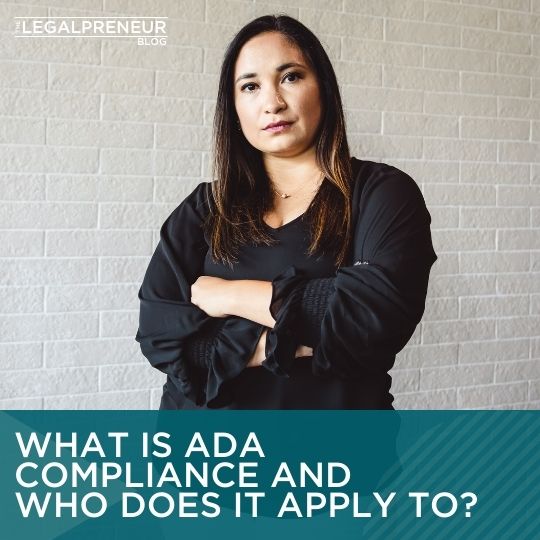Clients often ask me what it means to be in compliance. And truthfully, the answer is complicated. Not because compliance is hard, but because it’s layered and requires a certain level of thoroughness that can be exhausting.
Simply put, compliance means you are running a business that follows the laws, codes of conducts and professional ethics of your respected industry. It differs from field to field, although there are some common aspects that nearly all businesses must include. The key to staying in compliance is creating manageable checks and balances, and understanding the various aspects. You can listen to more on that here.
Today, we’re going to discuss what it means to be ADA compliant. ADA compliance is short for the Americans with Disabilities Act Standards for Accessible Design. It means that your website is accessible to those with disabilities. This is different from 508 compliance, which is a federal law that requires the inclusion of all people in public life, including workplaces, schools, transportation and other places of the general public.
Both ADA compliance and 508 compliance have the same goal — being inclusive of all people. Where they differ is the requirements. In order for your website to be ADA compliant, it must meet standards in four categories.
Your website must be:
- Perceivable
- Operable
- Understandable
- Robust
Here’s what that looks like:
- Closed captions on videos that are synchronized to the visuals in the video
- Each video also has an audio description for the visually impaired
- Website includes a written policy on website accessibility
- If aspects of your website are not currently accessible, you have a written timeframe of when those changes will be made
- Business number and email address is posted clearly on the website home page
- You offer alternative methods for potential clients who cannot use a computer to access your products and services
Who does ADA compliance apply to?
Although following ADA compliance is likely within your company’s best interest, not everyone is legally required to comply with these laws.
Here’s who is:
- All local, county, state and federal agencies
- Any business that relies on the general public or for their benefit
- Privately run companies that currently have 15 or more employees
The best way to determine if your business should be ADA compliant is by answering the question: “Does your business or organization have places or areas that are designed for public accommodation?”
Meaning does your business include or involve:
- A retail store
- A restaurant
- Public park
- Public restroom
- Airport
- Train/subway terminal
- Bus station
- Healthcare facility
- Hotel
- Result
- Apartment or other rental property
- Public sidewalk
- Parking garages
- Sports stadiums
- Schools
If it does, you must ensure your business follows the regulations set forth by the ADA.
When you begin to break down compliance in all of its forms, you’ll begin to see that many of these requirements are things that you’ve implemented already. Compliance is not nearly as complicated as we sometimes make it out to be. Create your checklists and systems, conduct your bi-annual review, and you will be well on your way to running a legally compliant business, in all its forms.


